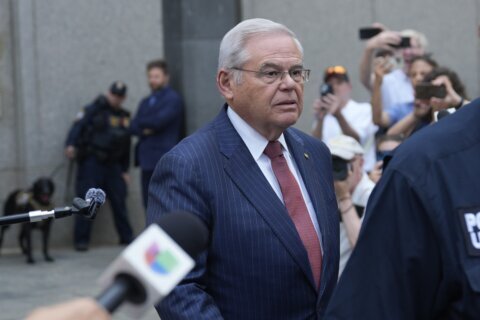Bonds make up the foundation of most successful retirement portfolios. These assets are debt-related instruments issued by governments and corporations that are looking to raise money. Think of them as the other side of the loan, where the “issuer” is the borrower and investors are collectively the lender.
[Sign up for stock news with our Invested newsletter.]
Like any loan, bonds carry interest payments in addition to repayment of the principal amount — meaning this asset can provide a steady stream of cash back to investors. This makes them incredibly appealing, particularly for older investors looking for income to replace their paychecks once they stop working. They also tend to be much less volatile than stocks, making bonds ideal for capital preservation in retirement.
Unfortunately, building a diversified portfolio of individual bonds can be a complicated and opaque process. But thankfully, bond funds have democratized access to fixed-income markets by allowing even small-time investors to put as little as a few dollars behind big-ticket loans to corporations, banks and the government.
Not all bond funds are the same, however, and while they are easy to buy, they are also easy for retirement investors to misunderstand. Here’s a brief rundown of some of the top bond funds out there and what they have to offer:
| Bond Fund | Trailing-12-month yield* |
| iShares iBonds Dec 2026 Term Corp. ETF (ticker: IBDR) | 3.5% |
| Dodge & Cox Income Fund (DODIX) | 3.9% |
| Dodge & Cox Global Bond Fund (DODLX) | 3.4% |
| Vanguard High-Yield Tax-Exempt Fund (VWAHX) | 3.6% |
| Kensington Managed Income Fund (KAMIX) | 4.2% |
*As of March 18, 2024.
iShares iBonds Dec 2026 Term Corp. ETF (IBDR)
While it’s impossible to pinpoint a single “best” bond fund for all investors since everyone’s needs and objectives are different, certain strategies can be better than others.
“One thing we’ve been working with clients on is implementing defined-maturity ETFs for fixed-income exposure,” says Chris Berkel, investment advisor and president of AXIS Financial in Edmond, Oklahoma. Defined-maturity exchange-traded funds aim to combine the diversification of a bond fund with the certainty of investing in individual bonds and knowing you’ll get your full principal back at maturity.
This lets investors “ride down the yield curve, or control duration and maturity exposures, which can be tailored to annual distribution needs,” Berkel says. “The downside is that they don’t offer very long maturities currently.”
IBDR, for example, matures in 2026, which means the fund will terminate on or about Dec. 15, 2026, at which point the net assets will be divvied up among investors. It does this by investing only in bonds with maturities between Jan. 1, 2026 and Dec. 15, 2026. In the meantime, it pays a 3.5% trailing-12-month yield through monthly distributions, with the exception of January since investors receive a double distribution in December each year.
Dodge & Cox Income Fund (DODIX)
When looking toward retirement, investors aim to not only preserve capital but also watch their investments grow. This is where DODIX tosses its hat in the ring. DODIX aims to combine a high and consistent rate of current income while taking advantage of opportunities to maximize growth.
DODIX is an actively managed core fixed-income fund composed primarily of investment-grade debt securities. Opportunities in other areas are also present in the fund, such as debt of non-U.S. issuers and individual securities based on fundamental research.
DODIX has an “adept investment team and robust investment approach,” which alongside minimal fees, makes it a tough fund to beat, writes Morningstar senior manager research analyst Sam Kulahan.
The fund tends to favor securitized debt — nearly half of the portfolio — and corporate bonds — more than one-third of the portfolio.
Morningstar gives DODIX five stars and a gold badge, indicating that analysts believe this fund will outperform a relevant index or most of its peers over a market cycle.
[Alternative Investments: What They Are, How to Invest]
Dodge & Cox Global Bond Fund (DODLX)
Another top-rated Dodge & Cox fund is DODLX. Morningstar gives it five stars and a gold badge thanks to its “patient and disciplined approach, strong and experienced leadership, and attractive fees,” Kulahan writes.
DODLX emphasizes corporate debt whereas its peers tend to focus on sovereign debt, Kulahan adds. An emphasis on corporate bonds tends to lead to a higher yield and this corporate bias can help the fund during rate shocks by providing lower interest rate sensitivity than funds with more government debt, according to Kulahan.
“Dodge & Cox employs a team of industry, credit and macro analysts to find the companies, sectors and currencies that are most appropriate for this strategy’s global mandate,” he writes. “The process leads to a concentrated portfolio with high-conviction holdings, including large allocations to emerging markets.”
Despite this, Morningstar still considers it to have moderate risk, which is paired with high return.
Vanguard High-Yield Tax-Exempt Fund (VWAHX)
For retirees looking to manage their taxable income, the Vanguard High-Yield Tax-Exempt Fund could be a good pick. It straddles a happy place between high-yield and tax efficiency by investing primarily in investment-grade municipal bonds. The fund managers have the leeway to invest up to 20% in below-investment grade bonds, too, to enhance yield.
VWAHX is “one of the most compelling candidates for straightforward exposure with slightly more credit risk to the long end of the municipal market,” writes Elizabeth Foos, a Morningstar associate director who covers the fund.
She notes that it benefits from “experienced leaders who work through a risk-conscious and reliable investment process and from ultralow fees,” with an expense ratio of 0.17%.
This has paid off for the fund, which outpaced its index and 90% of peers over the previous 10 years. Morningstar gives it five stars and a silver badge, indicating a high conviction that it will continue to outperform in the near future.
Kensington Managed Income Fund (KAMIX)
“One of my top bond funds for retirement is the Kensington Managed Income Fund,” says Ronnie Thompson, investment advisor representative and owner of True North Advisors in Northville, Michigan.
He likes it for its unique investment strategy that lets the fund managers adjust their approach based on market conditions. During positive market cycles, they’ll lean more into higher-yielding bonds, and in negative or volatile markets, shift more toward Treasurys, government securities and cash equivalents. This combination of leaning into high risk-reward in good times and focusing on protection in bad times has helped the fund outperform a typical buy-and-hold strategy over the long term, Thompson says.
The managers’ efforts have resulted in a 4.2% yield, but this is mitigated somewhat by the above average 1.42% expense ratio. The high fee level and poor parent company rating compared to industry peers leads Morningstar to give the fund only two stars and a negative rating.
More from U.S. News
Magnificent 7 Stocks: What Are They and How They Dominate the Market
7 Best Vanguard Bond Funds to Buy
5 Best Bond Funds for Retirement originally appeared on usnews.com
Update 03/18/24: This story was published at an earlier date and has been updated with new information.







